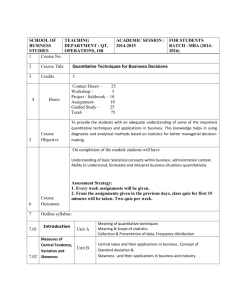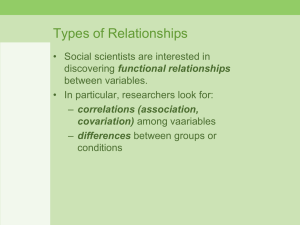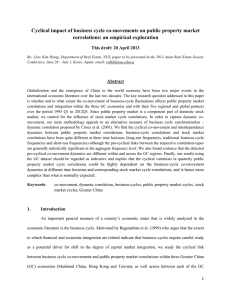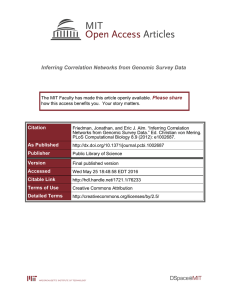Introduction to Earth Science
advertisement
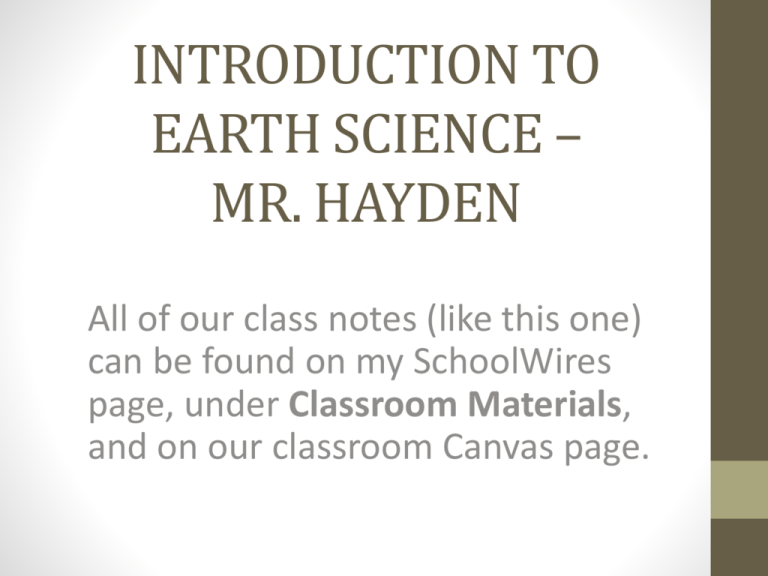
INTRODUCTION TO EARTH SCIENCE – MR. HAYDEN All of our class notes (like this one) can be found on my SchoolWires page, under Classroom Materials, and on our classroom Canvas page. What is expected of you this year? • Be prepared for class on a daily basis • Pencil • Notebook • Binder/Folder • Maintain a neat notebook throughout the year • Will be checked each section for points • Check my website as needed • Check your grades weekly Four Branches of Earth Science • 1. Astronomy – study of space (outside of Earth’s atmosphere and celestial bodies) • 2. Meteorology – study of the Earth’s atmosphere • 3. Oceanography – study of Earth’s oceans • 4. Geology – study of the Earth (“geo” means Earth) • Environmental Science – how organisms and the environment affect each other. • NOT EARTH SCIENCE: Life Science or Biology – study of living things Introductory Quiz • Be able to remember the name of each of the four Branches of Earth Science and what it is they study. • Be able to place each of the topics we discussed into the most appropriate category of Earth Science. • Lastly, be able to DESCRIBE/EXPLAIN topics that can fit into more than one of the branches of Earth Science as an essay question. 1. Astronomy 2. Meteorology 3. Oceanography 4. Geology Biology Practice with these topics… * which branch would BEST fit each? * practice tests can be taken online, using Quizlet • • • • • • • • • • • • Weather Ozone layer Cells Meteors Rocks Types of Trees Coal Air temperature Metal ores Hurricanes Rain Stars • • • • • • • • • • • • • • History of the Earth Tornadoes Precipitation Fish Diamonds Solar Systems Tides Clouds Earthquakes The Moon Soil Sharks Saltwater Minerals Scientific Method and Scientific Testing We use the scientific method to solve problems or answer questions. Steps of the Scientific Method • 1. Identify your problem/question. - Problem must be able to be tested scientifically. • 2. Research your problem • Scientists share information • Use reliable sources. • Identify bias in your research • 3. Create a hypothesis. • An educated guess. • Usually an “if” “then” • Always based on research! • 4. Test your hypothesis scientifically Testing your hypothesis • • • • Test as many trials as possible. Quantify your data (use numbers) Make everything in your test constant (the same) Test data should be organized if possible Creating your test • Must contain an independent variable • Also known as manipulated variable • Scientist changes this • Independent changes the dependent variable • Also known as responding variable • Changes based on independent variable • Tests may contain a control group • group separated from the rest of the experiment where the independent variable being tested cannot influence the results • Often given a “placebo”, intended to deceive the recipient • 5. Analyze your data • Don’t be biased! • Identify flaws in your test. • 6. Make your conclusion • Often, this identifies a new problem or changes your hypothesis. • Share results so that they can be retested, confirmed, etc. • Share results with others – scientific knowledge builds! Correlations • Correlations show cause and effect between two values. • If changing one value affects another value, there is a correlation between the two. Positive Correlation As one factor increases, the other factor increases. Or. As one factor decreases, The other also decreases. Negative Correlation As one factor increases, The other decreases. Or. As one factor decreases, The other one increases. No Correlation • There is no connection between one value increasing And the other value. How I want you to answer! • Name, describe and draw the correlation • Name it as positive negative or none. • Describe how one factor affects the other • Draw the chart that shows the correlation Let’s practice correlations • Remember: 1. name 2. describe and 3. chart each. • The correlation between how much you eat, and your bodyweight. • The correlation between the amount of cardiovascular exercise and your weight. • The correlation between how much money you spend and your bank account.



